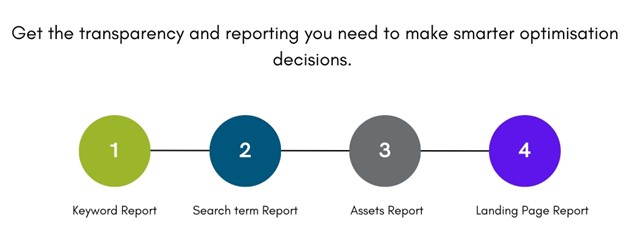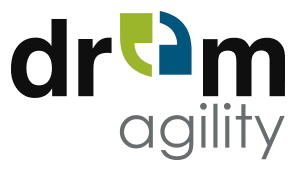AI Max From Matching to Meaning
Traditionally, Google Ads revolved around matching: you pick the keywords, Google finds the users.
AI Max flips that on its head. Instead of asking “Which keyword should we bid on?”, Google’s AI now asks “What is this person actually trying to achieve?”
Users are no longer typing “dog carrier.”
They’re writing “What’s the best way to transport my dog on a plane?”
And Google’s AI Max decides that the right ad is a dog carrier.
If someone asks “How do I get algae out of my pool?” it’ll serve ads for pool hoovers or chemical cleaners.
"It’s intent-based matching at scale, and Google claims +14% conversion uplift at a similar CPA/ROAS, rising to +27% for advertisers still using exact and phrase match."
When Automation Misfires
AI Max automatically generates ad assets and even chooses your final landing page.
That can be powerful or disastrous depending on your site structure and meta data.
Take one client we saw recently: their web agency cloned the metadata from their parent brand when rebuilding a child site. Every product page referenced the wrong business name.
A lazy error which would’ve prevented AI Max from working properly.
If you remember the early days of Performance Max, you’ll recall the horror of ads landing on the “About Us” page, chosen by PMax as an appropriate and popular landing page. The digital equivalent of a cul-de-sac.
AI Max gives you more control, but only if your foundation (markup, metadata, exclusions) is solid.
Google Has Learned from previous AI launch mistakes.
AI Max isn’t another wild experiment. Google has clearly listened to advertiser feedback.
Here’s what’s new and genuinely useful:
Targeting Controls
You can now:
- Use Negative Keyword Lists to cut irrelevant intent matches before they waste budget.
- Set Location Targeting at the ad-group level to teach the AI the context for your audience.
Brand Controls
You can finally include or exclude branded terms to manage when your ads appear for your own (or competitors’) brand names.
It even fact-checks generated content against your landing page, a subtle but important guardrail to prevent hallucinated claims.
Creative Controls
AI Max can auto-generate ad copy, but you can set text guidelines: exclude phrases, define tone, or block certain concepts entirely.
You can also exclude specific URLs from being used as landing pages, meaning your “About Us” page or any other anomaly can stay safely out of rotation.
Four Levels of Reporting
Another welcome addition: granular reporting options to bring back the transparency that Performance Max lacked.
- Keyword Report – see which queries triggered your ads
- Search Terms Report – understand intent at sentence level
- Asset Report – identify which auto-generated creatives drive results
- Landing Page Report – confirm where users actually land
For data-driven advertisers, that’s a breath of fresh air.

The Hidden Catch
AI Max’s intelligence is only as good as the markup on your site.
If your structured data, metadata, and feed aren’t accurate, Google’s AI will make well-intentioned but poor choices.
That’s why Dream Agility’s MLoD technology integrates directly with AI Max results.
It analyses performance, automatically negatives out underperforming keywords and search terms, and continuously refines what AI Max learns ,all without you lifting a finger.
In short: Google predicts; we correct.
How to Get It Right
If you’re thinking about switching to AI Max, or already testing it, here’s what you should do first:
- Audit your site markup and metadata. Make sure every product, category, and content page tells the AI exactly what it is.
- Exclude any irrelevant or duplicate URLs. Stop the system from wandering into dead ends.
- Feed it quality data. Connect first-party conversion data so Google knows what “good” looks like. Ensure your offline orders are in there and it’s not optimising for high value fraud, or returners by correcting sales values and audiences in Google Ads. ( this is a whole other article but feel free to ask us about how we can help with this too)
- Monitor performance daily for the first few weeks. This is a learning phase, and early tweaks make a big difference.
- Automate optimisation. Tools like our MLoD keep AI Max and your budgets focused on real value.
Final Thoughts
AI Max is not just another feature ,it’s the blueprint for how Google sees the future of search:
Fewer keywords. More prediction. Fewer settings. More AI, it ensures you’ll be seen alongside the AI Search results.
For advertisers with clean data and a well optimised site , the opportunity is huge.
For everyone else, it’s a potential money pit dressed as innovation.
The trick is knowing how to guide the AI, not just to trust it.
Book your free AI Max Audit today.
We’ll check your site markup, feed quality, and ad structure ,and show you how to make Google’s newest AI work for you, not against you.
